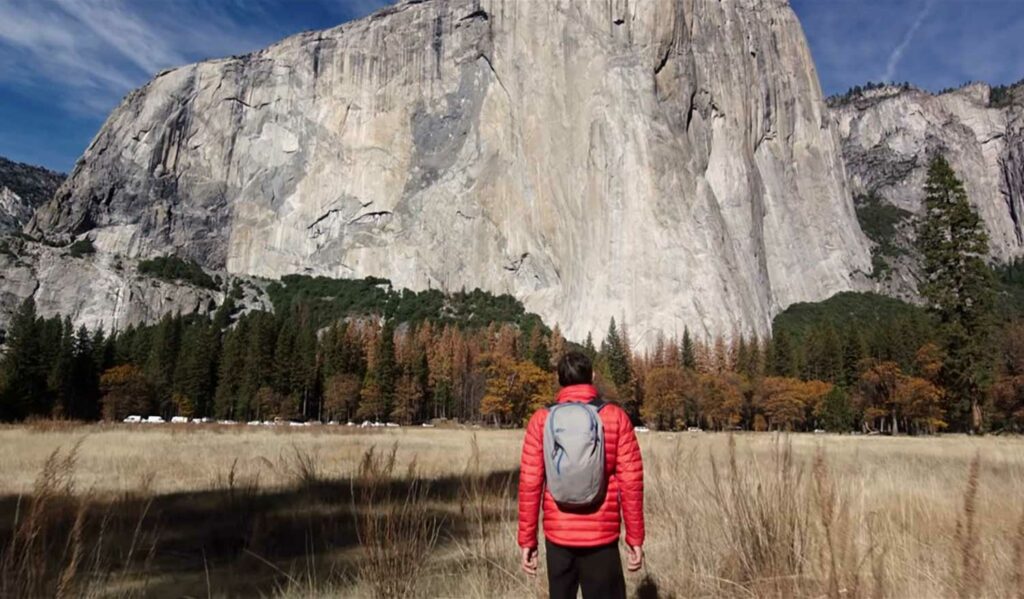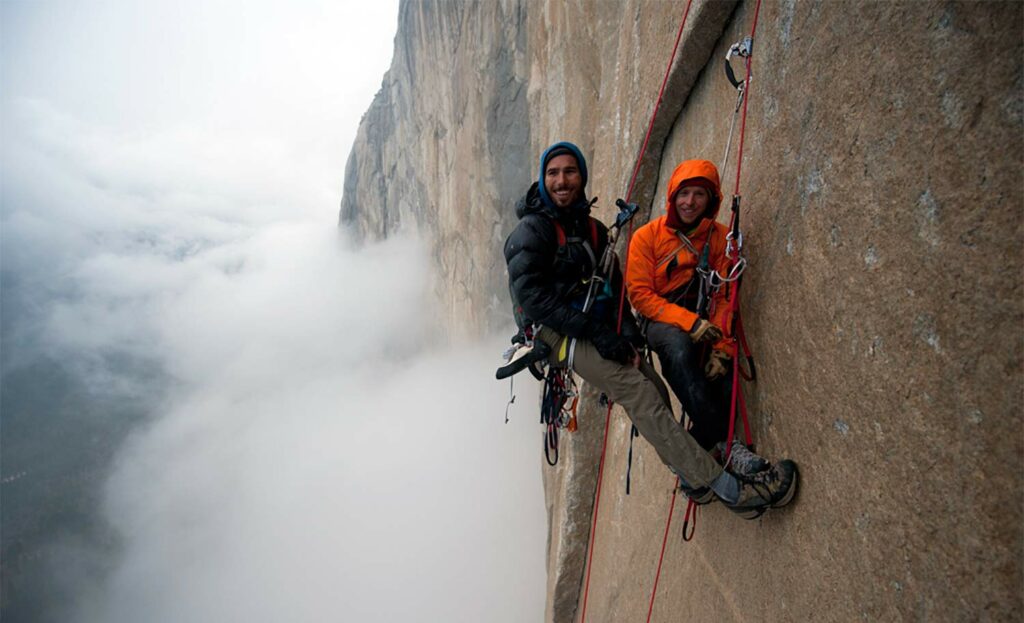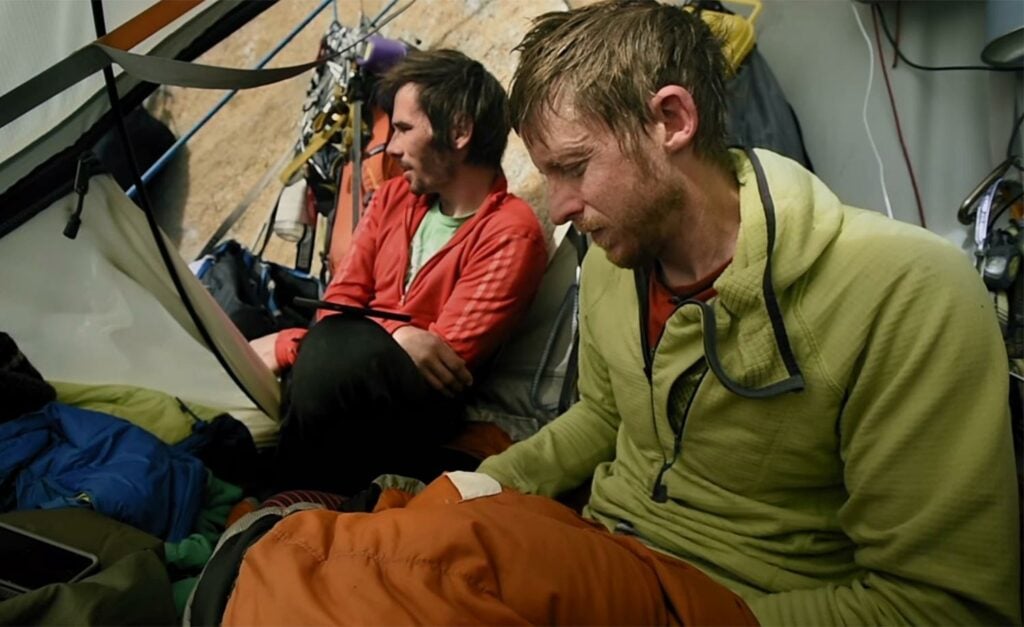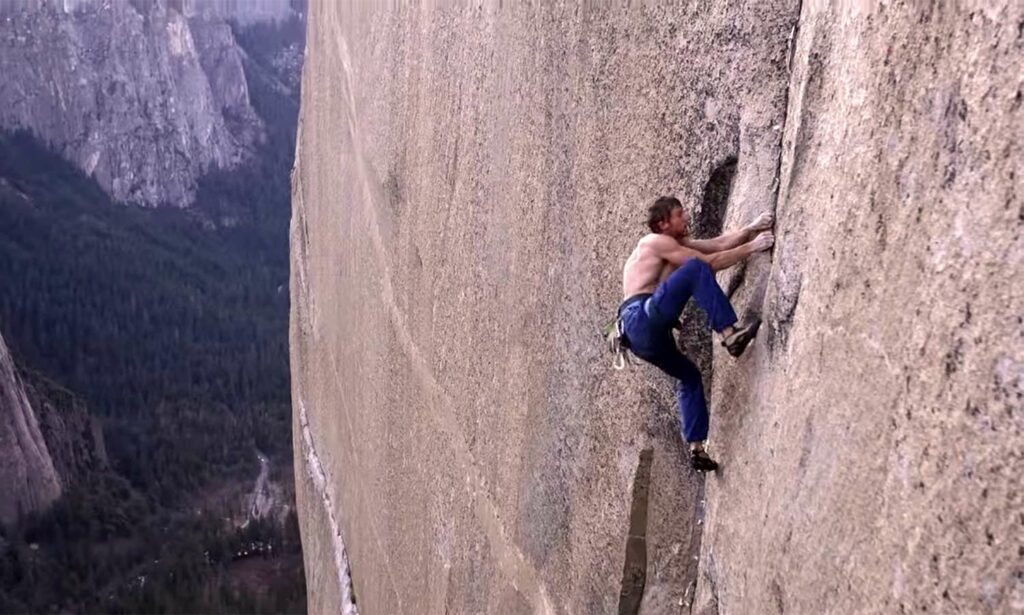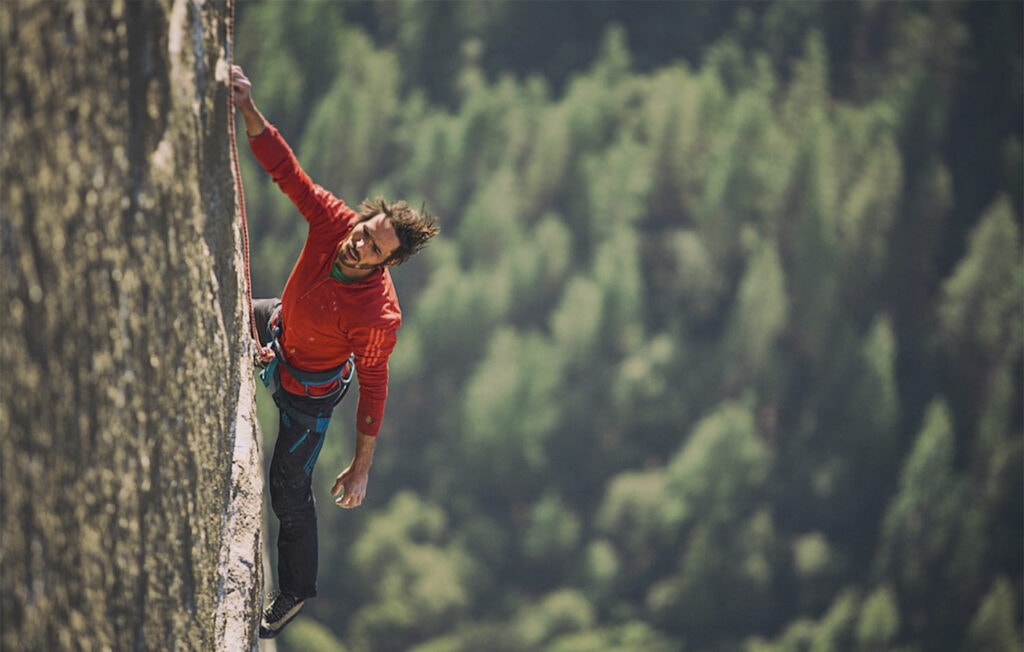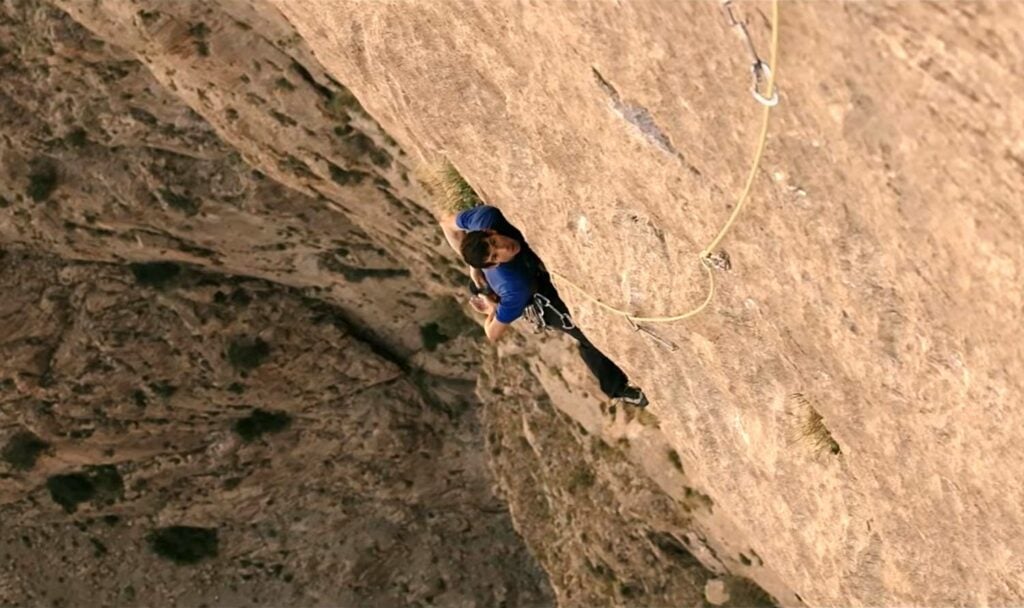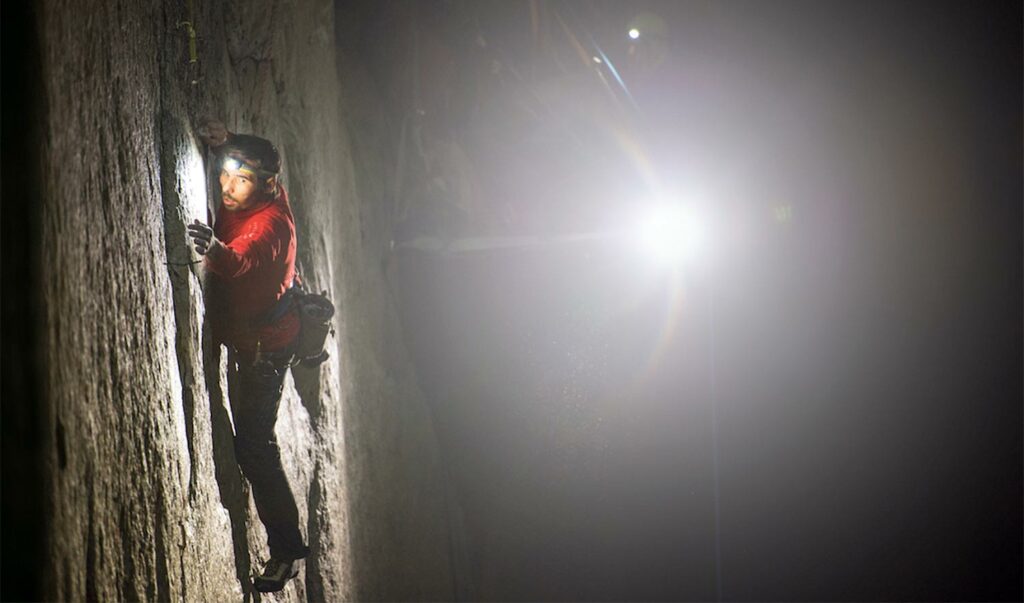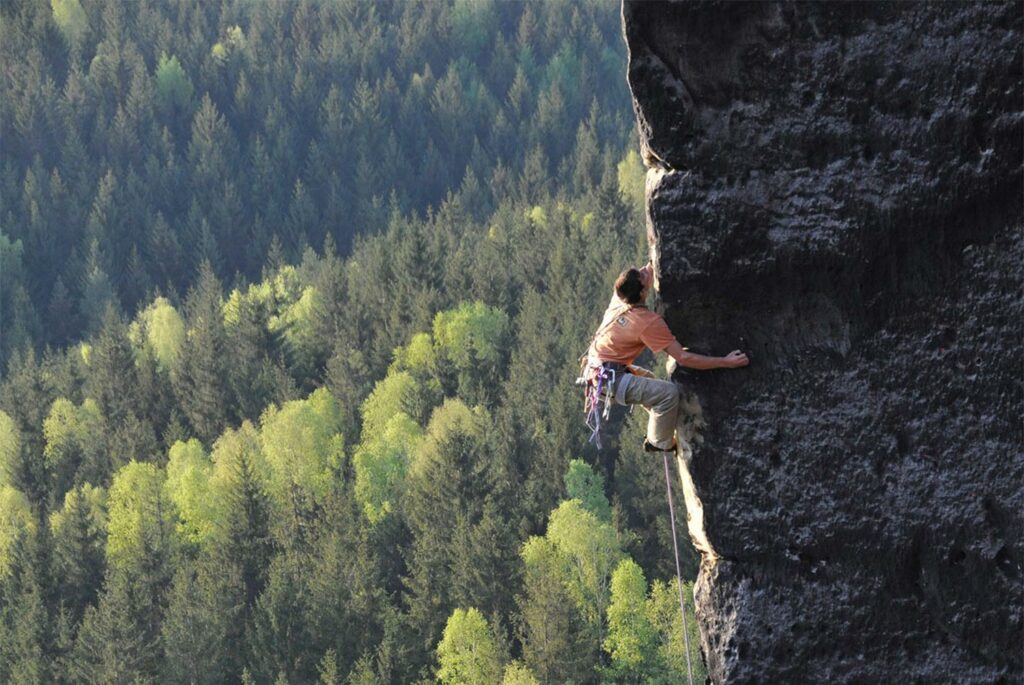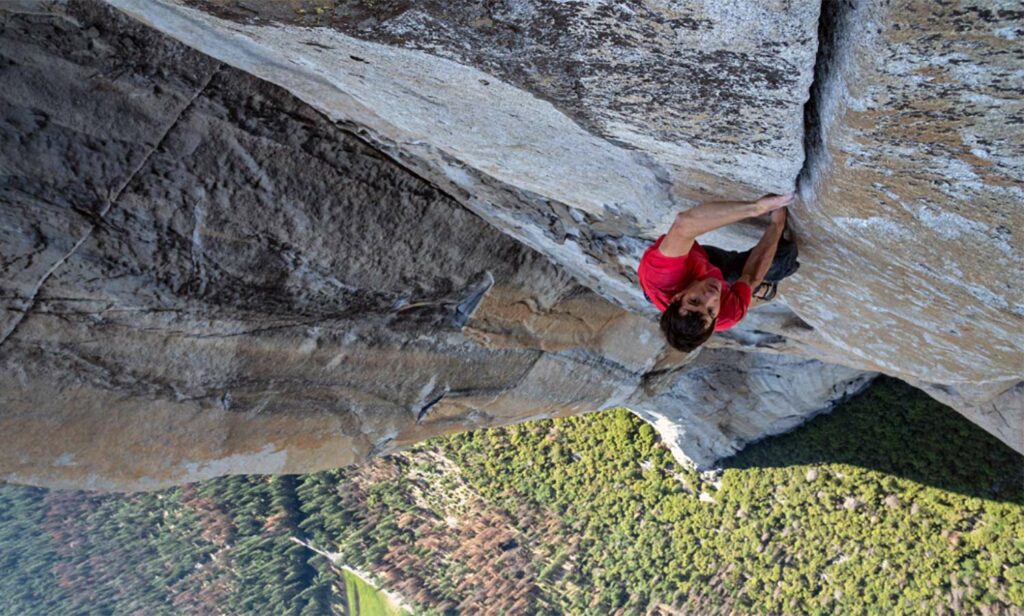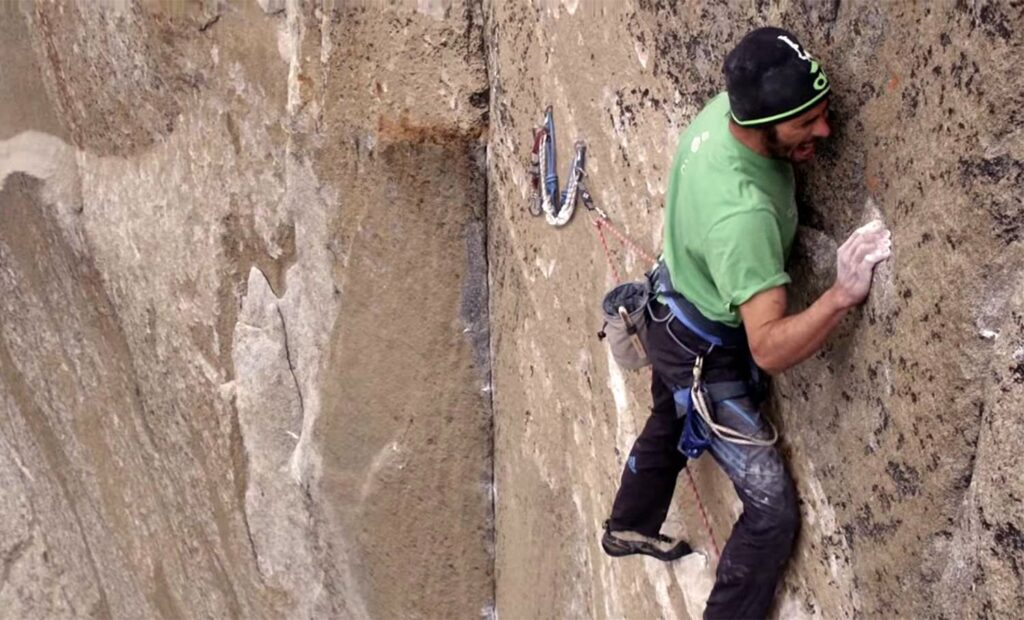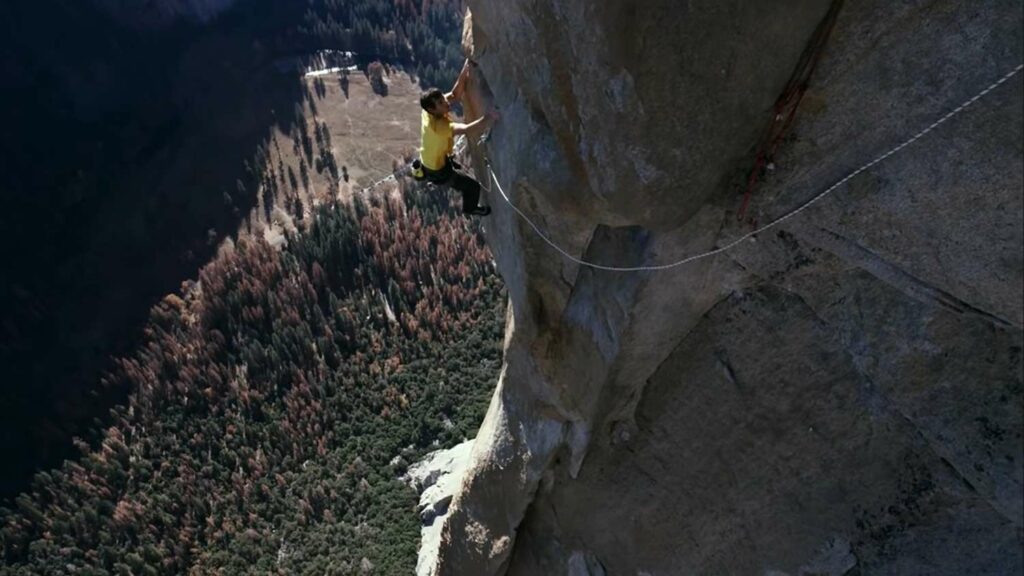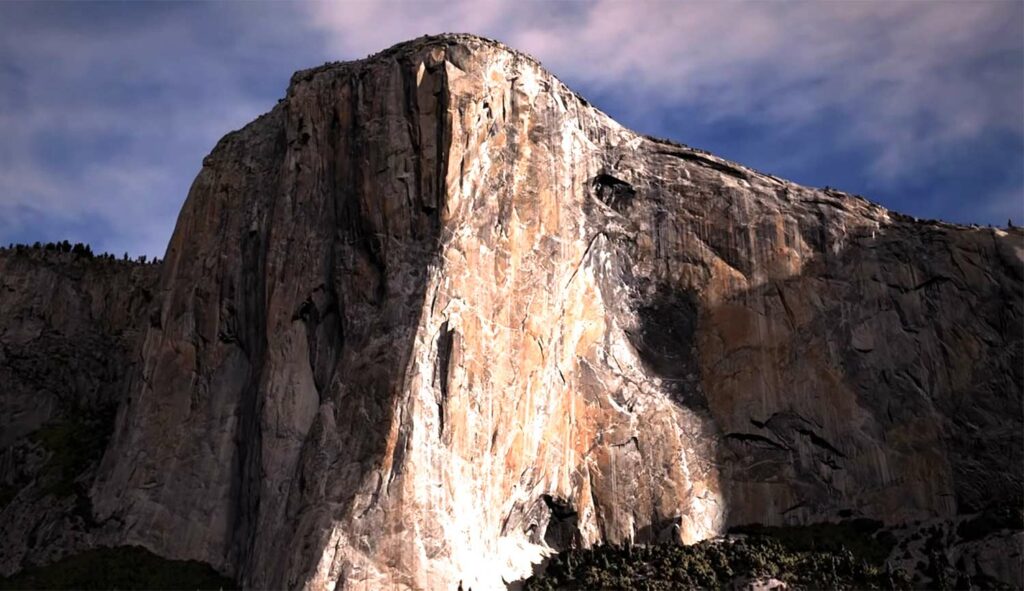The Dawn Wall vs Free Solo: 5 Major Differences (2024)

Published on: 04/16/2022
The Dawn Wall and Free Solo are two of the better-known climbing documentaries. And with both movies featuring the same sport, an interchangeable cast, and a similar set of locations, it’s no wonder they get confused in the public eye.
The distinction between these two movies is clear to those with a passing knowledge of climbing history. Both document extraordinary climbing; both feature El Cap in the Yosemite National Park and an interchangeable cast of elite climbers.
But free soloing (no-rope) and attempting a first ascent (rope for safety only) are wildly different types of climbing. As a result, the kind of narrative tension they produce in a documentary is equally different.
In short, we spend most of The Dawn Wall wondering – Are they going to make it to the top? We spend the majority of Free Solo thinking – Is he going to survive?
1. Different Drama
Free Solo
And here’s the thing – most casual viewers will have more of an emotional response to Free Solo. There’s very little to explain – man climbs a 7,500-foot rock face with only climbing shoes and a chalk bag.
Anyone can understand the consequences of a single mistake. However, the risk seems much higher if you’re a casual viewer than if you know Alex Honnold and his skillset.
The simplicity of its appeal may help to explain some of the many accolades (including an Oscar for Best Documentary), critical acclaim, and box office success this film has enjoyed.
The drive, obsession, and single-mindedness of Alex Honnold are unusual by any standard. His portrait in Free Solo includes its fair share of references to his Asperger’s syndrome. It’s also suggested his father was on the autistic spectrum and had monomania.
Honnold’s obsessive nature may drive him to perfection – something he talks about in the film. But it also appears to limit him emotionally. He struggles to understand other people’s concern for his welfare fully.
Director Jimmy Chin did well by including some footage highlighting the emotional effect this level of risk can have on a community. We tend to think of any risk to strangers in abstract terms. At moments in the film, it seems like Honnold can only understand the risks he takes in a similar way.
Honnold’s budding relationship with his now-wife, the way the film crew navigates the risk to their friend, and their desire to make a movie are fascinating. The type of challenge surrounding the Dawn Wall creates a different kind of narrative.
The Dawn Wall Drama
Attempting the first ascent of something like the Dawn Wall is an entirely different prospect from Alex Honnold’s free solo of El Cap on the Half Dome. Both make for very different movies.
Where Honnold’s goal required a single, flawless attempt, Tommy Caldwell and Kevin Jorgeson’s first free ascent required endless repetition and near-constant failure.
On top of this mentally draining component, their ascent of the Dawn Wall also meant cooking, eating, sleeping, and living in a portaledge on the cliff wall. These are a kind of aluminum-framed tent-cot-hammock hybrid hung from a single point, bolted to the rock. Their comfort has improved over the years. But they’re still less than ideal.
As a result, the Dawn Wall has a different feel to Free Solo. It’d be unfair to dismiss the latter in a Free Solo vs. Dawn Wall movie debate simply because the former is better-known. Caldwell and Kevin Jorgeson’s single push to the top of El Cap includes its fair share of drama. But it’s a different kind of drama.
Not as Hollywood-friendly
The climbing style it depicts doesn’t have the same box office appeal as watching someone climb El Cap with no rope. The Dawn Wall may appeal more to climbers or those with experience in other high-level adventure pursuits. But casuals will probably be more blown away by Free Solo.
The secondary drama and portrait of Tommy Caldwell in the Dawn Wall are gripping. Cadwell’s journey to the zenith of his career took some unusual turns. Much of his career has been atypical, from being taken captive in Kyrgyzstan and pushing his captor off a cliff to losing his index finger in a construction accident.
But the drive to make the first ascent of the Dawn Wall route appears to be born from the pain he felt after his divorce. Caldwell was married for seven years to Beth Rodden, an elite climber in her own right and a member of the ill-fated Kyrgyzstan trip.
When this relationship fell apart in 2010, Caldwell needed something to focus on if he were to bounce back from his deep depression. Luckily for the climbing community, he focused on the Dawn Wall of El Cap.
2. Different Approaches
Free Solo
Free soloing means rock climbing without using a rope as safety equipment. This practice is so dangerous that fewer than 1% of those who climb ever try it. It’s considered by some to be the purest of climbing styles but also one with the highest mortality rate.
This is unsurprising when one mistake can result in freefall from thousands of feet. Free soloing is the type of climbing Alex Honnold is most known for. It’s inherently cinematic and impressive at a glance, even to those who know nothing about our hobby.
Dean Potter was a Yosemite Valley climber, alpinist, and BASE jumper. He was also one of the elite free soloists active in his time and an inspiration to Alex Honnold. He free-soled a small part of El Capitan by pioneering Easy Rider.
This 6-pitch climb covered the final six hundred feet of El Capitan and involved a down climb through an existing route. It was a glimpse of what was possible.
But climbing magazine editors and sponsors were not universally in love with this new type of climbing. Potter lost his Patagonia sponsorship after climbing Delicate Arch. Honnold, too, would lose support from Cliff Bars, who felt the level of risk had too much potential for negative publicity. (Potter would later lose his life in a wingsuit accident)
Free solo climbing is still a controversial topic amongst climbers. Many (including Caldwell) are on record as saying it’s inherently selfish. And while it’s easy to respect the athleticism, it’s also easy to understand the criticism.
Free Climbing
This gets a little confusing to the casual observer who also hears the term free climbing. Free climbing means using only the power of your arms and legs to propel you up the rock.
This approach contrasts with the rope-assisted ascents of an earlier era when equipment, technique, and knowledge weren’t sufficient for free climbing.
Tommy Caldwell and Kevin Jorgeson made the first free ascent of the Dawn Wall using only the power of their arms and legs. The ropes they use are only present for safety – no mechanical assistance.
This allowed Caldwell and Jorgeson to try (and fail) repeatedly on the most challenging pitches of the route without falling to their deaths.
But here, there’s a way that the different approach affects the narrative. Caldwell and Jorgeson are a climbing team, taking turns at the belay station and pushing up together pitch by pitch.
A free solo ascent is by its nature a one-person affair. Honnold discusses how the presence of cameras initially was a problem for him.
Caldwell and Jorgeson’s attempt at the Dawn Wall route required a lot of logistical support on the ground and the camera operators. The film primarily tells us about Caldwell’s drive. But it also shows how much support and teamwork a climber needs to ascend something like the Dawn Wall for the first time.
3. Different Feats
Free Solo
It’s not for us to say what these monumental efforts required. But we can probably assume that Honnold’s feat demanded an intense focus for a short period of time in addition to the years of preparation and training.
His achievement is impressive by any standard and considered by some to be humanity’s greatest athletic feat to date. Various climbers discuss the envelope and how far you can push it in the two movies.
For Honnold, it appears to be important to spend some time at the vanguard of what’s possible. In the future, someone like Jim Reynolds may come along and topple his place there. But there’s also a chance that no one will recreate his feat for a very long time.
The Dawn Wall
Caldwell and Kevin Jorgeson’s Dawn Wall ascent tested them differently. Bitter cold, monotony, endless repetition, shredded fingertips, and discouraging failure were all a part of their 19-day ascent.
For them to eat, drink, and stay alive, friends on the ground would hoist up or carry supplies. One forty-pound haul from a friend details salami, pesto, cans of chili, red bell peppers, penne, rice, cucumbers, eggs, brown sugar, and a bottle of bourbon.
To give some context to how much harder a first ascent is than subsequent ones – Adam Ondra managed the second ascent of the Dawn Wall in only eight days. Of course, Adam Ondra is a beast, comparable only to Chris Sharma in terms of people climbing today.
Subsequent Dawn Wall Climbs
But Ondra concedes that there’s no comparison and that subsequent climbs are always immeasurably easier than the first. With the bolts placed, routes established, and the blueprint already in the climber’s mind, anything after the first time becomes increasingly easier.
4. Different Routes
Freerider
There’s a big difference in the routes the two films depict. Both take place on El Capitan. This granite monolith was named via a loose Spanish translation of its Native American name.
It should come as no surprise that Honnold’s free solo route up El Cap is not as technical as the one Caldwell and Jorgeson attempt to free climb for the first time.
The route climbed by Alex Honnold in Free Solo is called Freerider. The Huber brother pioneered it in 1998, and it has a 5.12d rating (YDS).
This is not exceptionally high in the context of El Capitan and the routes around it. But 5.12d is nonetheless a level of climbing few will ever achieve without massive dedication and training – never mind doing it without a rope! If the goal is to solo El Cap, Freerider is one of the easier ways to do it.
But bear in mind, it’s a challenging route for most people using full safety equipment. And regular people (regular for fit, conditioned, lifelong climbers) take a few days to complete the route. For Alex Honnold to free solo El Cap took around four hours.
The film does an excellent job of showing that this free solo climb was possible due to meticulous preparation, training, and free climbing of the same route with a rope endless times. As his friend and co-star stated, Tommy Caldwell – Alex Honnold lives to climb, not to cheat death.
The Dawn Wall
Named for the early morning light as it strikes the granite, the Dawn Wall is Yosemite valley’s most iconic landmark. It’s both the biggest of the Yosemite big walls and probably the hardest big wall climb ever attempted.
Rated at 5.14d, the Dawn Wall line has more 5.14 pitches than the rest of El Cap combined.
It took relentless scouting, attempts, and failures for Caldwell and Jorgeson to top out this route. Yosemite veteran, John Long, remarked that spending seven or eight years scouting a place followed by a combined four hundred days up on the cliff face represented a new level of dedication and perseverance. But the Dawn Wall required this level of commitment.
Even for seasoned climbers and Yosemite Valley experts, success on the Dawn Wall seemed unlikely. To climb the Dawn Wall was a dream that few people believed in outside of Caldwell.
Directors of the Dawn Wall, Josh Lowell and Peter Mortimer do a good job representing the frustration, difficulty, and monotony that the two climbers had to endure. For example, Kevin Jorgeson’s attempts to climb past pitch 15 are hard to watch.
5. Different Climbers
OK, so this one is both obvious and not entirely true. And there’s some crossover, with Tommy Caldwell appearing in Free Solo and Honnold making talking head appearances in the Dawn Wall movie.
These two climbers were familiar with each other before, having successfully climbed the Fitz Roy Traverse in Patagonia together and shared many notable ascents. But Free Solo is essentially a portrait of Alex Honnold, whereas the Dawn Wall is primarily a portrait of Caldwell, featuring Jorgeson.
Alex Honnold

Honnold secured his place in history with his free solo ascents. The first of these was his climb of Moonlight Buttress in 2008. Though he holds the speed record for the Yosemite triple crown and others, his free solo of the Half Dome cemented his legacy.
Whether influenced by his underactive amygdala (the part of the brain that assesses risk) or his place on the autism spectrum, Honnold is an unusual person doing unusual things.
Personality Factors
His portrait is fascinating because so few people with this sensation-seeking urge are such high-achievers. People who struggle to elicit excitement from their actions and look to increase this sensation more commonly turn to drugs, alcohol, gambling, or promiscuously. Or at least, the ones that stay on the ground do.
Free solo climbing is considered an unusual outlet for chronic sensation seekers. Honnold’s climbing style appears to be bound up with his personality type. And both are interesting to watch. The former civil engineering student from Sacramento makes for a fascinating character study.
Tommy Caldwell and Kevin Jorgeson
The Dawn Wall is primarily about Caldwell and his extraordinary commitment to his project. Considered impossible by many in the climbing world, Caldwell’s drive to top out the Dawn Wall makes for compelling viewing.
Rock climbing styles of every kind involve failure, repetition, and growth. But watching the level of climbing in the Dawn Wall, you realize what’s involved in big walls of that nature.
The Dawn Wall as Depression Metaphor
Tommy Caldwell’s resilience in bouncing back from losing his index finger (perhaps the most important to climbers) is nothing short of impossible. The soul-searching he experiences after believing he’d killed their kidnapper in Kyrgyzstan is believable.
And the heartbreak he experiences after the breakdown of his marriage is almost universally relatable. Both these climbing films show people overcoming the odds. But it’s hard not to feel that Caldwell had more stacked against him.
The Dawn Wall also features Kevin Jorgeson, a climber previously known in the climbing community for his technical bouldering exploits. This San Francisco-born climber was less experienced in big wall climbing, and his journey is also compelling.

Same Shoe
This is a bonus one. But it’s interesting. The Italian brand La Sportiva sponsors both Honnold and Caldwell for their climbing shoes. But Honnold often wears a pair of La Sportiva TC Pros – the TC in this case standing for Tommy Caldwell.
TC Pros
In Free Solo, Alex wears a pair of TC Pros for his entire ascent of Freerider. Caldwell designed these shoes for the Yosemite’s granite, climbing style, and big walls -including the Dawn Wall. He used the same shoe for his iconic line on the Dawn Wall.
Want to dig further? Check out our selection of the best climbing movies on Netflix.

